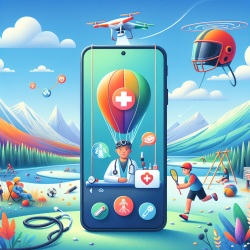The challenges of delivering specialized healthcare to remote communities are well-documented, particularly when it comes to pediatric concussion care. A recent study titled Evaluation of a pilot paediatric concussion telemedicine programme for northern communities in Manitoba sheds light on the potential of telemedicine to bridge these gaps effectively.
The Need for Telemedicine in Remote Areas
Pediatric concussions often occur during sports and recreational activities. For children living in northern Canadian communities, accessing timely medical care can be challenging due to geographical and socioeconomic barriers. This delay in care can lead to prolonged symptoms and complications.
The pilot program in Manitoba aimed to address these issues by establishing a telemedicine service between the Pan Am Concussion Program in Winnipeg and the Thompson General Hospital. This initiative provided a platform for real-time videoconferencing consultations, significantly reducing the time from injury to initial consultation.
Key Findings and Benefits
- Timely Access: The median time from referral to initial consultation was just 2 days, ensuring that patients received prompt attention.
- High Recovery Rates: By the end of the study, 90% of patients met the criteria for clinical recovery.
- Cost Savings: The program resulted in an estimated cost avoidance of $40,972.94, highlighting its economic viability.
- Cultural Sensitivity: The program recognized the unique needs of Indigenous populations, who made up 70% of the patient cohort.
Opportunities for Practitioners
This pilot program offers valuable insights for healthcare practitioners looking to enhance their skills in managing pediatric concussions through telemedicine. Here are some actionable steps:
- Implement Telemedicine Solutions: Consider adopting telemedicine platforms to provide remote consultations and follow-ups, especially in underserved areas.
- Cultural Competency Training: Engage in training programs that focus on delivering culturally sensitive care to Indigenous populations.
- Collaborate with Multidisciplinary Teams: Foster partnerships with specialists across various fields to provide comprehensive care remotely.
- Pursue Further Research: Explore additional studies to assess the long-term outcomes of telemedicine interventions on pediatric concussion recovery.
The Path Forward
The success of this pilot program underscores the potential of telemedicine as a viable solution for delivering specialized care to remote communities. By leveraging technology and fostering collaboration among healthcare providers, we can ensure that all children have access to timely and effective concussion management.
To read the original research paper, please follow this link: Evaluation of a pilot paediatric concussion telemedicine programme for northern communities in Manitoba.










